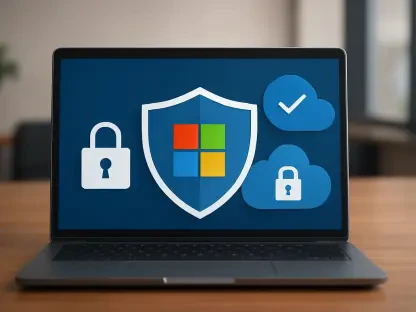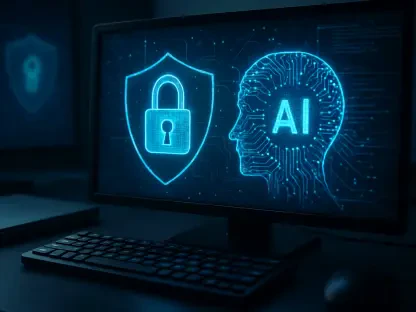Imagine a hidden adversary infiltrating the digital corridors of government agencies and telecommunications giants, silently extracting critical intelligence while evading even the most advanced security systems. This is the reality posed by a sophisticated cyber espionage tool linked to a China-aligned nation-state actor, a malware so elusive that it has targeted strategic entities across multiple continents for years without widespread detection. This review dives into the intricate workings of this threat, exploring its technical prowess, operational tactics, and the profound challenges it presents to global cybersecurity.
Technical Breakdown of a Cyber Weapon
Core Architecture and Capabilities
At the heart of this malware lies a custom-developed suite known as NET-STAR, a powerful tool designed to target Internet Information Services (IIS) web servers. Comprising three primary components—IIServerCore, AssemblyExecuter V1, and AssemblyExecuter V2—this suite facilitates in-memory execution, ensuring that malicious activities leave minimal traces on disk. Encrypted command-and-control communications further shield its operations, while mechanisms to bypass security features like Antimalware Scan Interface (AMSI) demonstrate a deep understanding of defensive technologies.
The significance of targeting IIS servers cannot be overstated. These internet-facing systems are often critical to organizational infrastructure, making them prime entry points for attackers seeking widespread access. By exploiting these servers, the malware achieves a foothold in environments that are both high-value and vulnerable, amplifying the potential for long-term espionage.
Beyond its core design, the suite’s ability to adapt to different environments showcases a level of sophistication rarely seen in generic malware. This adaptability ensures that once embedded, the threat can persist through system updates and routine security scans, posing a continuous risk to compromised networks.
Exploitation Strategies and Stealth Tactics
Initial access often begins with the exploitation of known vulnerabilities in widely used systems like Microsoft Exchange and IIS servers. Flaws such as ProxyLogon and ProxyShell have been leveraged to breach defenses, highlighting the persistent danger of unpatched software in critical environments. These entry points allow attackers to infiltrate networks with alarming precision, targeting entities of geopolitical importance.
Once inside, advanced evasion techniques come into play. A notable method, timestomping, involves altering file timestamps to obscure the timeline of malicious activities, complicating forensic analysis. Such tactics ensure that the malware remains undetected for extended periods, allowing attackers to maintain persistence within compromised systems.
This stealth is further enhanced by the use of legitimate infrastructure and shared resources with other threat actors, making attribution and detection even more challenging. The combination of technical ingenuity and strategic patience positions this threat as a formidable adversary in the digital domain.
Operational Tactics and Target Focus
Evolving Methods of Attack
Recent observations indicate a tactical shift in how this malware operates. Moving away from broad email harvesting, attackers now employ batch scripts and Windows Management Instrumentation (WMI) to directly target databases. This precision allows for the extraction of specific, high-value data, reflecting a more focused approach to intelligence gathering.
Additionally, the development of custom tools tailored to specific campaigns reveals a high degree of adaptability. These bespoke solutions are often aligned with geopolitical events, suggesting a strategic intent to capitalize on moments of international tension or diplomatic activity. Such synchronization with global affairs underscores the state-sponsored nature of these operations.
The ability to refine tactics over time, from exploiting known flaws to crafting unique malware, mirrors broader trends among similar threat groups. This constant evolution ensures that defensive measures must also advance rapidly to keep pace with emerging threats.
Strategic Targets and Geopolitical Implications
Deployment of this malware has been notably concentrated on government entities, including ministries of foreign affairs, embassies, and military operations. Telecommunications sectors have also been prime targets, particularly in regions like Africa, the Middle East, and Asia, where strategic infrastructure plays a vital role in national security.
Specific focus on countries such as Afghanistan and Pakistan highlights the geopolitical motivations behind these campaigns. These regions, often central to international security discussions, provide a wealth of intelligence that can influence diplomatic and military strategies. The targeting of such areas emphasizes the broader agenda of espionage over mere disruption.
The implications of these attacks extend beyond immediate data theft. Compromised systems in critical sectors can undermine trust in digital infrastructure, affecting international relations and economic stability. This calculated selection of targets reveals a deliberate effort to gain long-term strategic advantages.
Challenges in Defense and Mitigation
Detection Difficulties and Stealth Barriers
Countering this threat presents significant hurdles due to its advanced stealth mechanisms. The use of in-memory execution and encrypted communications makes traditional detection tools less effective, as there are few tangible artifacts to analyze. This invisibility is a cornerstone of the malware’s design, frustrating efforts to identify and neutralize it.
Moreover, the overlap in infrastructure with other known hacking groups complicates attribution. Shared resources create a web of interconnected threats, where isolating one actor from another becomes a daunting task for cybersecurity professionals. This interconnectedness can delay response times, allowing attackers to exploit vulnerabilities further.
The reliance on known vulnerabilities also underscores a systemic issue: the slow pace of patching in many organizations. Until timely updates become a universal priority, such threats will continue to find easy entry points into critical systems, perpetuating the cycle of compromise and recovery.
Current Efforts and Necessary Improvements
Cybersecurity initiatives are underway to address these challenges, with an emphasis on enhanced monitoring of internet-facing systems. Organizations are increasingly urged to prioritize vulnerability management, ensuring that patches are applied promptly to mitigate risks. This proactive stance is essential in reducing the attack surface available to sophisticated adversaries.
Collaboration among global security teams also plays a crucial role. Sharing intelligence about tactics and indicators of compromise can help build a collective defense against such threats. However, the rapid evolution of attack methods means that static solutions are insufficient; continuous adaptation is required to stay ahead.
Investment in advanced detection technologies, capable of identifying anomalous behavior rather than relying solely on signatures, represents another vital step. Such tools can offer early warnings of potential breaches, providing a window of opportunity to respond before significant damage occurs.
Reflections on a Persistent Cyber Adversary
Looking back, the review of this stealthy cyber espionage tool revealed a meticulously crafted weapon that challenged even the most robust security frameworks. Its technical sophistication, from the NET-STAR suite to advanced evasion tactics, underscored the growing complexity of state-sponsored threats. The strategic targeting of government and telecommunications sectors further highlighted the malware’s role in broader geopolitical maneuvers.
As a path forward, organizations need to prioritize rapid vulnerability patching and invest in behavioral detection systems to counter the stealth of such threats. International cooperation in sharing threat intelligence emerges as a cornerstone for building resilience against these adversaries. Additionally, fostering a culture of proactive cybersecurity, where updates and monitoring are non-negotiable, becomes imperative to safeguard critical infrastructure. These steps, though challenging, offer a roadmap to mitigate the impact of similar threats in the evolving landscape of digital warfare.









